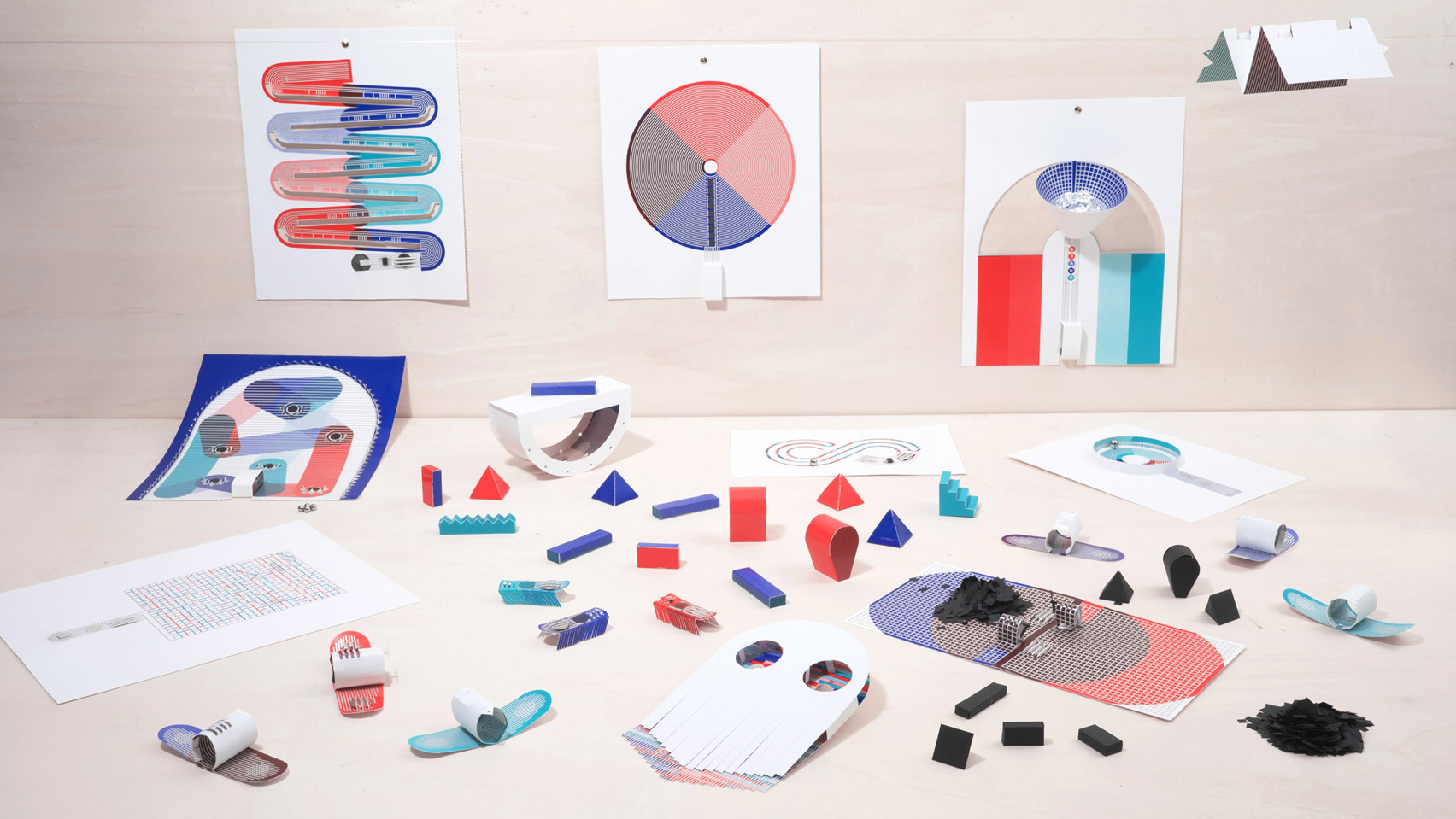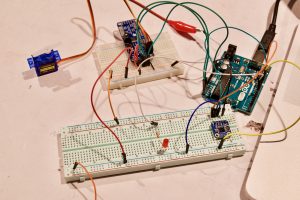Due 11:59pm, 28 March 2018.
What is your weakest skill set in this class? Circuits? Power? p5.js?
Create a physical interaction that relies upon your weakest skill. During the review, describe how you addressed this challenge and what you learned.
48-339/739 Spring 2018
Due 11:59pm, 28 March 2018.
What is your weakest skill set in this class? Circuits? Power? p5.js?
Create a physical interaction that relies upon your weakest skill. During the review, describe how you addressed this challenge and what you learned.
If anyone wants to use the Particle Photon, Daragh Byrne, a professor in SoA, put together this great step by step guide. I’ve done this three times now on the network and haven’t had any issues.
http://diotlabs.daraghbyrne.me/getting-started/setting-up-your-photon/
The idea is to use the mirror illusion to create a 3D animation. This is a perspective mapping project that uses a unity plugin to create 3D objects by modifying the models. This is inspired by videos on Youtube about creating holograms through the phone. It uses a coin to calibrate the location and additionally uses environment mapping techniques to create the optical map. The map is then invested to create the model through the unity code. They propose that this system can be used to create 3D animations such as virtual agents.
References
Paper: http://roxanneluo.github.io/PeppersCone.html
Talk
As I was looking through the various projects, I found myself drawn to projects that incorporated traditional materials in unexpected or new ways. Looking at how wood, cloth, ink, paper were transforming to provide an interface or an output. These projects were of interest not only for their traditional material quality, but for their lack of screen and the subtle, almost invisible nature of their forms.
This project uses pressure and directional gesture to control sound. The form itself it beautiful and looks like many cloth speakers, however the surface comes to life with light hidden below the fabric and sound.
http://cargocollective.com/gruckus/Frijlets
I stumbled upon this wood and magnetic project that is comprised of multiple components that can grown and expand depending on the task and how you want to interact.
liquid MIDI: paper goes electronic to create unique controls and sounds
This project was really interesting in terms of materials as well as aesthetically, the team here uses Bare Conductive ink (which I recommend following them on Instagram) to create textile, flexible, interfaces. They are using an Arduino and simple screen printed process to create these interfaces and show the potential.

Papier Machine booklet features electronic toys that are made from its pages
This project was fun exploration of the materials and techniques to provide lo-fi interactive sheets that come alive as you bend, cut, fold, construct the pages. The simplicity of this project and the playful nature of it is what I found most interesting and worth sharing.

https://blog.adafruit.com/2018/02/14/3d-printing-on-fabric-hexagon-triangle-pattern-test-wearablewednesday/
I thought this was interesting technique that could have some interesting implication in combining or housing technological components within fabric.
On a side note: I also found myself drawn to wearables that affix to the skin. Below are those links. I see a lot of potential across the board with these and look forward to following their progress in years to come.
Japanese research group develops wearable sensor that stays on the skin for a week
Self-healing “e-skin” could provide amputees with realistic sensations
L’Oréal launches wearable UV sensor to protect against skin cancer
SketchSpace: Designing Interactive Behaviors with Passive Materials
A common disadvantage of tangible interaction is that the behavior of interface is limited to its physical form/characteristics and is usually not generally applicable. This solution tackles this problem by turning any passive objects into a control input device using a camera recognition and a 3D projection mapping so that the user can take advantage of unique tangibility of each object. It would be interesting to have a massive collection of tangible interactivities based on the object image database, and the user is capable of customizing tangible interaction at scale.
TACTUM!
So essentially, Tactum is a software that scans a body part, like your arm, and allows you to 3-D model an object on it using your finger. (Check out the video, it’ll explain things better than I ever could.) It’s a way of using technology and physical interaction as a means of artistic personalization, with functional application.
I found information about Tactum in an article that mentioned it in conjunction with a new 3-D printer developed by the Disney research team that prints soft fabrics. I think the idea of pairing them is to insinuate that maybe one day we could all just step into our closets in the morning and get a whole new, personally created, perfectly tailored outfit. (Think: Cinderella’s fairy godmother but 3-D printer style.) This project takes a process that usually is reserved for either huge clothing companies or for select skilled individuals, and hands it to whoever can use this machine. I think that this hand-off is what makes this an interesting project, and what compelled me to immediately think “Ooh this is cool, I want to try this.”
https://blog.adafruit.com/2018/02/07/how-to-hack-a-color-sensing-umbrella/
This is a color sensing umbrella. You can touch the umbrella sensor to any object and it will light the umbrella up in the color it detects. This was created using a microcontroller, neopixel light strips, and a Flora color sensor. It uses a portable battery so the user is able to walk freely with the umbrella. I liked this idea because it’s a creative use for LEDs, visually appealing, and makes it safer for pedestrians at night.
https://learn.adafruit.com/ever-burning-flame-painting
This is another idea I found to be really interesting. It uses capacitive touch as it’s on/off toggle switch. When it is on, the flame lights up and flows in the pattern of real fire. I am always looking for ways to combine art and technology, so this project was especially appealing to me.
https://blog.adafruit.com/2018/01/17/one-day-this-tech-onesie-may-help-a-baby-with-jaundice/
Finally, this project drew my attention as they use LEDs as a solution for jaundice in babies. I felt personally connected to this as all of my younger cousins developed jaundice as infants. There is a microcontroller attached and LED strips can be controlled easily with a mobile device. The LEDs are on the inside of the suit, so the baby’s body is exposed to blue light without damage to the baby’s eyes.
I love LEDs!
If you weren’t ready for today’s crit, please present on Thursday.
Exercise: Find and investigate an interesting physical interaction project and write a paragraph or two about how it works and what you learned from your investigation.
Reminder that we have a list of resources, let me know if you’d like anything added:
This is a custom Google Home with a Japanese tutor. It uses a Google AIY Voice Kit and a simple Arduino script to control a servo.
References
https://aiyprojects.withgoogle.com/voice
Door Sensor System
This assignment was meant to tie in a motor to an I/C protocol. The initial set up consisted of: proximity/ambient sensor, servo motor, 16 servo driver, red LED, and an arduino. The proximity sensor is meant to tell the user when there is someone standing at the door. The user can then choose the yes button to turn the door and let them in, or the no button to flash a red light telling them to leave.

The GUI was a set of simple buttons. Yes in green, red in no, and a yellow door button that flashes onto the screen to alert the user that there is someone at the door. The yellow circle will not appear until the proximity sensor is triggered.

Code: